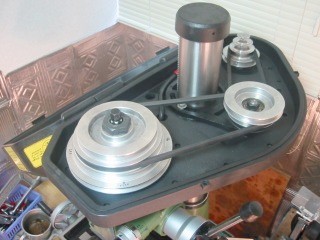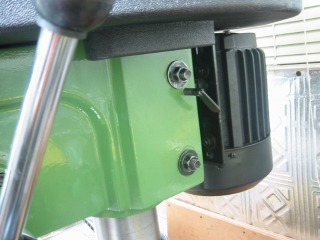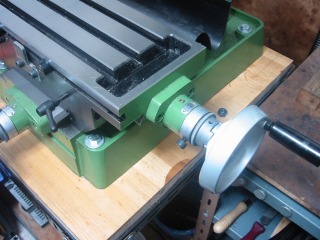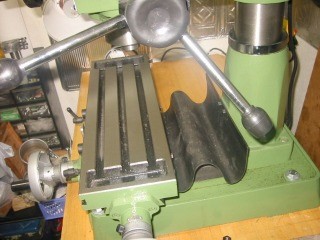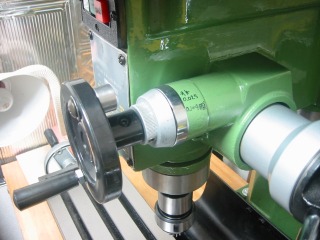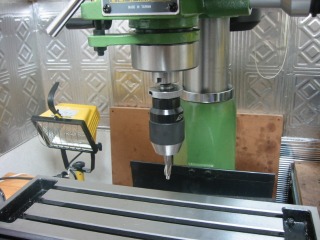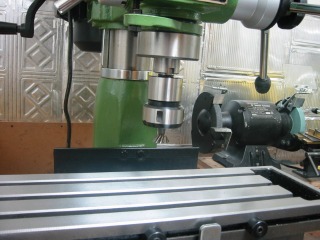|
MILLING MACHINE |
| Selection
I purchased a milling machining after reaching the limits of what I could accomplish on my lathe with a milling attachment. I chose a milling machine from Taiwan weighing about twice my lathe. It weighs about 150 Kg (330 pounds) and has more power and a larger table than were available on the lathe. Installation I installed the milling machine on a table of convenient height for me. The table is built of steel L-angle and has a top made from a plywood slab -- 30 mm thick, reinforced with a length of L-iron. The machine is fixed with four bolts, tightened sufficiently to preclude movement due to vibration during cutting. Performance and accuracy This milling machine features a motor with more than adequate power, a belt drive that is quiet, and offers 12 speeds, some of them in the low-speed range. The run-out of the spindle is less than 2/100 (0.02 mm) and the parallel accuracy of the table is 1/100 (0.01 mm). Weak point The column is the round type and alignment is lost if the mill head has to be raised, for example to change a cutter. |
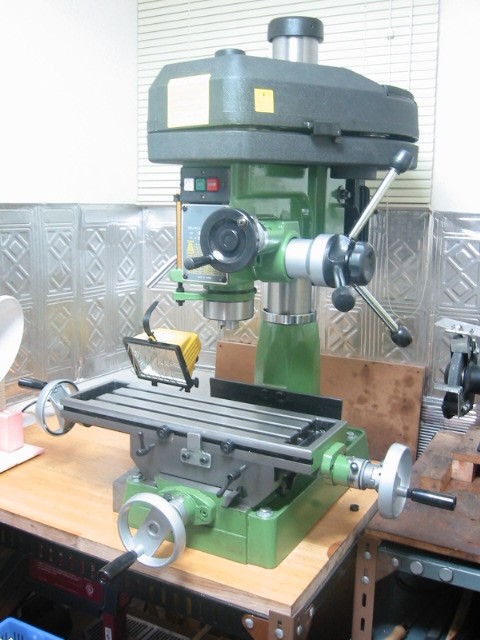 |
